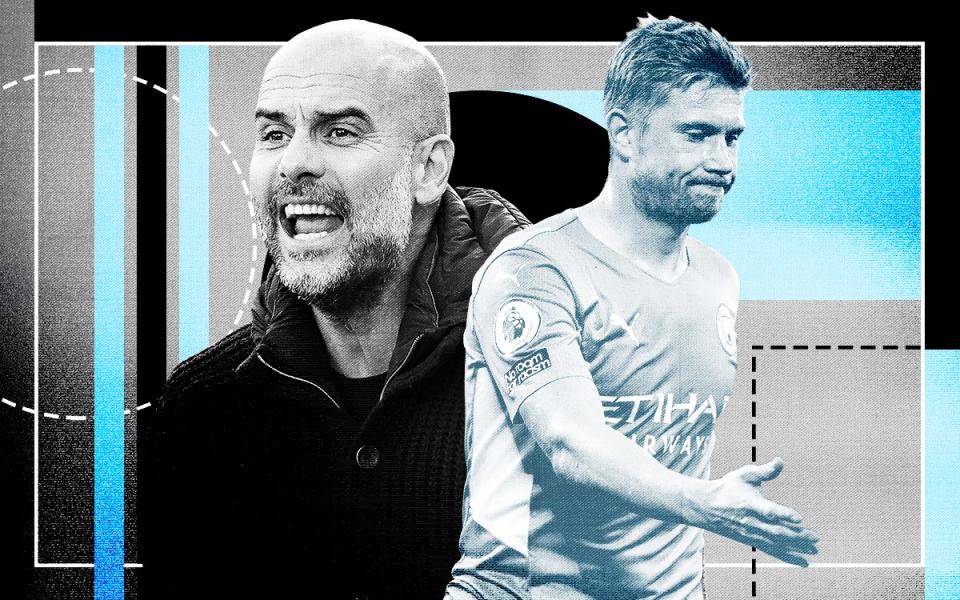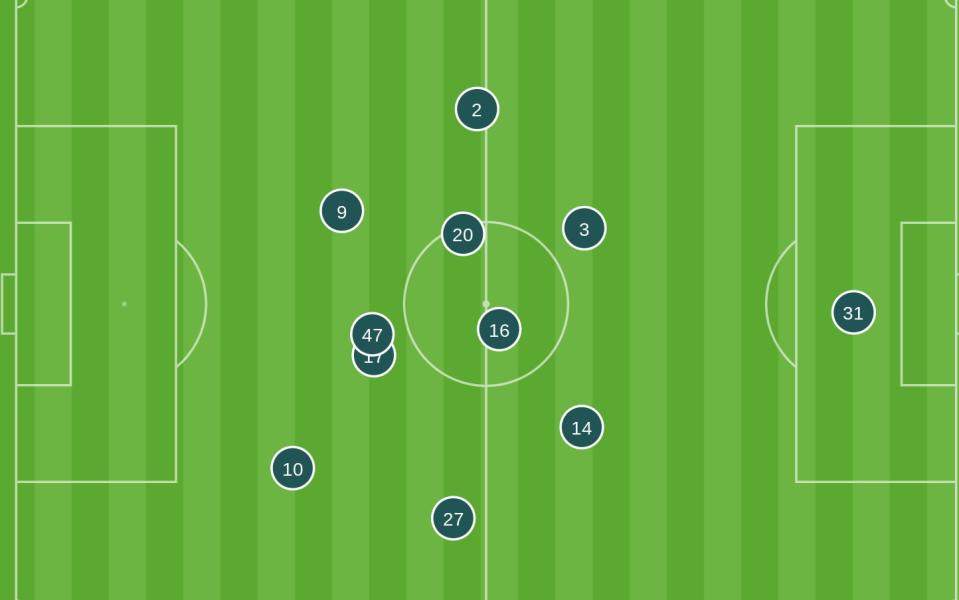What kind of Kevin De Bruyne can Manchester City expect this season?

In this four-part series, Telegraph Sport assesses a tactical or technical conundrum each of the four Premier League title contenders has to solve after the international break. You can read about whether Liverpool should start Diogo Jota or Roberto Firmino here and how Manchester United need to stop counter-attacks.
Manchester City's gilded squad is one of the most expensive ever assembled and is shaped by the outstanding coach of his generation and yet, perhaps by design, they have never relied on a totemic player. Pep Guardiola wants a scrupulously collective approach to building attacks and stopping those of his opponents, with City's patterned play wearing them down. Compared to title-winning teams past, there is no individual with Cantona, Henry or Ronaldo-sized influence. The closest to this status has been Kevin De Bruyne.
Such is City's staggering consistency over several seasons and their intimate acquaintance with Guardiola's demands, they could probably remain competitive and beat most teams without De Bruyne. For all their passing and pressing though, the Belgian elevates them to another level when he is at full tilt. On the rare occasions when opponents look to have successfully closed off City's avenues, his right foot can remove pieces from the chess board with almost laughable ease.
It has been a while since we have seen De Bruyne, who turned 30 in June, at his optimum. He left the stage in the Champions League final defeat to Chelsea prematurely due to a fractured eye socket, rushed back for the European Championships, only to suffer an ankle injury against Portugal. The challenge from Joao Palhinha was a poor one, and De Bruyne now regrets taking drastic measures to make the quarter-final against Italy.
"I played against Italy with two injections," De Bruyne admitted to HLN in Belgium during this month's international break. "If I had known beforehand what my ankle would have been like afterwards, I would not have played.”
That offered some context behind a curious performance at Anfield, when De Bruyne's deflected strike earned City a draw after several sloppy moments in possession. In another strong City performance in a week in which they also controlled games at Chelsea and PSG, De Bruyne was arguably City's worst player and was clearly feeling the pace by the end of the 90 minutes.
With the important caveat that he has only played 208 Premier League minutes this season, the absence of De Bruyne's name from the top of creativity rankings is a strange sight. De Bruyne's league ranking for chances created per 90 minutes has been second, first and first, with a peak of 4.37 chances created per 90 in 2019-20. So far this season, that figure is 2.91 per 90 minutes which ranks De Bruyne ninth in the division.
Looking at expected assists, De Bruyne's league ranking in this metric over the last three seasons has been tied fourth, first and toed first, with 2019-20 the best of those campaigns at 0.47 xA per 90 minutes. So far this season, De Bruyne ranks at a tie for 21st in this category at 0.19 xA per 90. He has also made the fewest passes into the penalty area of any of the last four seasons with 10 per 90 minutes.
De Bruyne has been used in a wider variety of roles than the classical, right sided No 8 in Guardiola's 4-3-3, a position he came to define. Tellingly, last season his expected goals per 90 jumped up to 0.42 having been 0.24 in 2019-20 and and 0.13 in 2018-19, as Guardiola tried to compensate for the lack of a recognised striker. If a player is getting into more goalscoring positions, it is highly likely that his creative numbers will drop off slightly. Not even De Bruyne can be in two places at once.
A good example of this higher starting position was in Manchester City's 1-0 win at Chelsea. Guardiola's team attacked in almost an old school 4-2-4 shape with Jack Grealish, Phil Foden, De Bruyne and Riyad Mahrez stretched across the pitch from left to right to pin Thomas Tuchel's defensive line of back.
Manchester City's average positions vs Chelsea with De Bruyne (17) adjacent to Foden (47)

Eight City players completed more passes than De Bruyne at Stamford Bridge, indicating that his role was less as an orchestrator and more of a decoy, between the width of the posts ready to deliver a telling moment. That might foreshadow what we can expect from De Bruyne this season: not sculpting entire matches with his artistry, but embellishing City's clockwork football with a few swishes of that right foot.

 Yahoo Sport
Yahoo Sport 





































